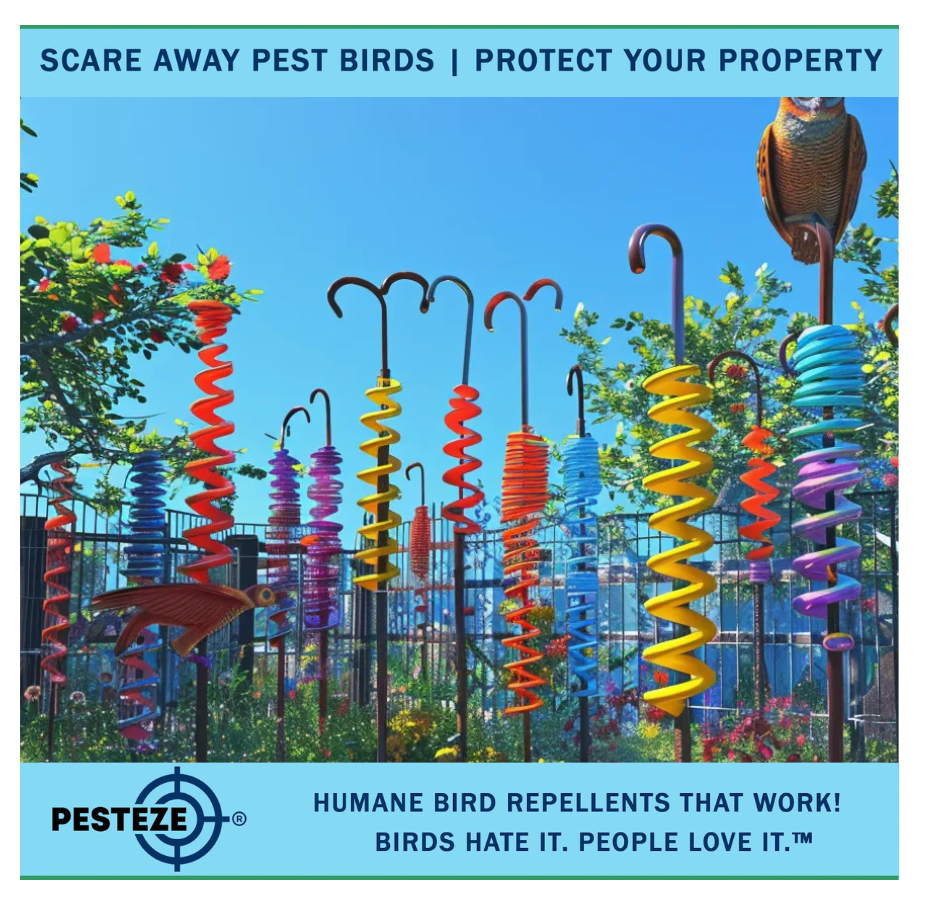THE ROLE OF LANDSCAPING IN BIRD DETERRENCE: DESIGN YOUR SPACE TO KEEP BIRDS AWAY!

THE ROLE OF LANDSCAPING IN BIRD DETERRENCE: DESIGN YOUR SPACE TO KEEP BIRDS AWAY!
SUMMARY
Landscaping plays a crucial role in bird deterrence. By strategically designing and maintaining your outdoor space, you can naturally reduce the presence of birds without the need for aggressive deterrents.
FEATURES
- Plant Selection: Opt for plants that don’t attract birds with fruit or seeds.
- Shrub Management: Trim dense bushes that could provide nesting spaces.
- Water Features: Avoid or cover water sources to discourage bird congregation.
- Ground Cover: Use materials that birds find difficult to forage in, like gravel or mulch.
- Perching Spots: Limit the number of open perching areas with strategic planting.
- Tree Placement: Avoid planting trees too close to your home or buildings.
DESCRIPTION
Landscaping can be an effective tool in bird deterrence, allowing you to manage your outdoor space in a way that naturally discourages birds from settling or frequenting the area. With the right choices in plant selection, layout, and maintenance, you can create an environment that is less inviting to birds, all while maintaining an aesthetically pleasing landscape.
Plant selection is a key factor in discouraging birds. While it might seem counterintuitive, certain plants that produce fruits, berries, or seeds are major attractions for birds. To avoid this, opt for plants that are less likely to attract birds. Plants like junipers or holly, for example, are dense and less inviting for birds to nest in, while flowers without seed heads can be chosen to prevent seed-eating species from lingering in your yard.
Shrub management is another important consideration. Birds often look for dense, undisturbed bushes to build their nests. Regularly trimming shrubs and keeping them well-maintained can make them less appealing to birds seeking secluded nesting spots. If you have a garden space, focus on keeping bushes open and avoid letting them grow too dense, especially near your home.
While water features like ponds and fountains can enhance the beauty of a landscape, they are also a strong draw for birds. Water features provide a much-needed resource, especially in warmer months. If bird deterrence is your goal, consider either covering these water features or using them in a way that makes access more difficult for birds, such as with moving water or enclosed designs.
When it comes to the ground cover in your yard or garden, some options are better at keeping birds from foraging. Birds typically prefer soft ground that is easy to dig through for food. By covering areas with gravel, mulch, or larger rocks, you can make it more difficult for birds to find food, thereby discouraging them from lingering.
Birds also rely on safe spots to land or perch, so limiting perching spots is a great way to deter them. This can be achieved by planting trees or tall shrubs in a way that reduces the number of open perching areas. Creating a dense or layered landscape can make it harder for birds to find spots to settle without feeling vulnerable to predators.
Finally, consider the placement of trees in relation to your home and buildings. Planting trees too close to your house can give birds easy access to eaves, attics, or gutters, where they might attempt to nest. By maintaining a good distance between your home and tall trees, you reduce the chances of birds nesting in unwanted areas.
By incorporating these landscaping strategies into your bird deterrence plan, you can create a harmonious outdoor space that is both beautiful and bird-resistant. Rather than relying on deterrents like spikes or chemicals, a well-planned landscape can naturally dissuade birds from making themselves at home.
- Tags: Bird Control Guide
- Maanas Mehta


Comments 0